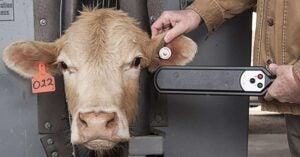National Cattlemen’s Beef Association President Mark Eisele, a Wyoming rancher, issued the following statement in response to the U.S. Department of Agriculture’s final traceability rule:
“USDA’s final traceability rule updates the existing requirement for animal identification that has been in place since 2013, switching from solely visual tags to tags that are both electronically and visually readable for certain classes of cattle moving interstate. Many producers are already familiar with using these visual tags and under the new rule, they will instead use electronic tags. NCBA has worked hard to secure $15 million in funding for producers to reduce the cost of implementing this change. We also remain committed to safeguarding producers’ private data and continuing to reduce the cost of ear tags for farmers and ranchers. Our industry faces a tremendous threat from the risk of a future foreign animal disease on American soil. To avoid devastating financial losses during a potential outbreak and to help producers quickly return to commerce, we need an efficient animal disease traceability system.”
Meanwhile, R-CALF USA CEO Bill Bullard expressed his organization’s disappointment with the rule:
“It’s no surprise that while USDA claims this EID mandate is to improve disease control, it proudly discloses in the rule’s accompanying press release that ‘the most significant benefits of the rule’ is to maintain foreign markets. This is because the beneficiaries of this rule are not cattle producers or consumers. Instead, this rule is intended to benefit multinational beef packers and multinational eartag manufacturers who will profit at the expense of cattle producers and consumers. In fact, because the rule is cost-prohibitive for independent cattle producers, the agency is using millions of taxpayer dollars to give millions of their unnecessary EID ear tags away.”



